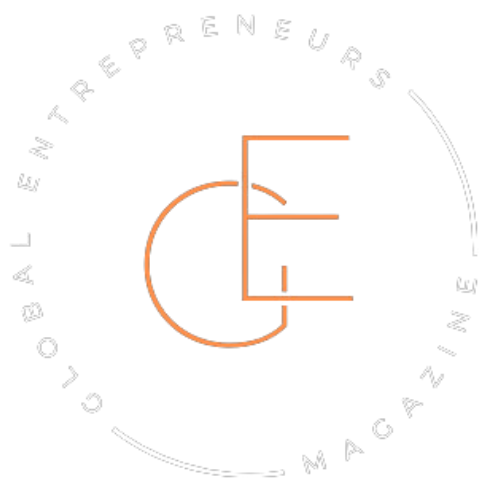It usually starts in the early hours—somewhere between the last coffee and the first birdsong. A solo founder sits in front of a screen filled with tabs: bug reports, product mockups, investor outreach emails, and yet another tweet about someone raising $5 million for something half-baked.
But this founder didn’t raise. Not yet. Maybe not ever.
There’s no team of ten. No full-time CTO. Just a dream, a shoestring budget, and the quiet hum of ambition.
This is where the new startup playbook begins.
Forget the idea that building something great means hiring fast and burning cash. Bootstrapped founders are flipping that script. And right in the middle of this shift is something that didn’t even have a name a few years ago—fractional tech.
No fluff. No overhead. Just sharp, experienced builders jumping in when needed and stepping back when they’re not. It’s not a hack. It’s a way of thinking.
And for the founder who’s doing it all, fractional tech isn’t a luxury—it’s the only reason things keep moving.
What ‘Fractional Tech’ Actually Means
It’s a term that sounds like startup jargon, but the idea is simple.
Fractional tech means bringing in experienced tech talent—think CTOs, engineers, product managers—for a slice of their time instead of the whole pie. It’s not outsourcing to a faceless agency or hiring a junior dev full-time because that’s all you can afford. It’s asking: What’s the smallest amount of high-impact expertise I need right now—and who can deliver it without the overhead?
A few years ago, this kind of setup would’ve been unthinkable. You either hired in-house or didn’t hire at all.
What ‘Fractional Tech’ Actually Means
It’s not a fancy new job title. It’s a shift in how startups get things done.
At its core, fractional tech is about bringing in experienced tech talent—CTOs, developers, designers, product leads—on a part-time or project-based basis. They’re not full-time hires. They’re not consultants in suits. They’re operators. People who’ve built things before and know how to drop into chaos, make sense of it, and move things forward.
Instead of hiring one full-time developer and hoping they can wear every hat, founders are working with specialists who show up for the right phase of the build. Maybe it’s a senior engineer for four weeks to architect the backend. Or a product strategist who helps map out an MVP and then steps aside.
This isn’t about cutting corners. It’s about staying lean without slowing down. Fractional doesn’t mean halfway. It means smart allocation of talent—just enough, just in time.
It’s how the best bootstrapped teams are getting to version one without giving up equity, draining their savings, or waiting for a miracle.
Why bootstrapped startups are leading this shift
Startups without funding don’t have the luxury of bloated org charts. Every dollar is a decision. Every hire is a risk. And when you’re building from scratch without outside capital, wrong moves hurt more.
That’s why fractional tech didn’t start as a trend. It started as a necessity.
Bootstrapped founders need traction before they can talk about growth. They can’t afford a full-time engineering team while still figuring out product-market fit. But they can afford to pay a sharp backend dev for two weeks to build exactly what they need—nothing more, nothing less.
This way of working forces clarity. There’s no room for fluff features or vanity metrics. Just outcomes. A login that works. A database that scales. A UI that doesn’t break under pressure.
And the people they’re bringing in? They’re often veterans who prefer this pace. People who’ve done the 80-hour weeks and now choose their battles. They don’t want to be part of a company—they want to be part of a sprint.
Bootstrapped startups aren’t cutting corners. They’re cutting waste.
The real people behind the titles
Forget the stereotype of the hoodie-wearing, caffeine-fueled coder glued to a desk. The people behind fractional tech don’t fit into a single mold—and that’s the point.
There’s Amanda, a former CTO who now splits her time between three early-stage teams. She jumps in when the architecture gets messy, helps shape the roadmap, then backs out once things are stable. She likes the variety. She likes staying sharp.
Or James, who codes at night after his kids are asleep. He’s not interested in joining another startup full-time, but he’s happy to build MVPs for founders who know exactly what they need. No fluff, no endless meetings.
Then there’s Priya, a UX designer who signs on for four-week product sprints. She’s fast, she’s clear, and she’s selective. She chooses projects based on the problem, not the paycheck.
These aren’t freelancers chasing gigs. They’re specialists who know their worth and choose flexibility over titles.
They move between teams without the baggage of internal politics. They drop into chaos and leave behind clarity. And they do it all without ever being on payroll.
This model works because both sides want the same thing: progress without the drag.
The pros—and the tradeoffs

Fractional tech gives founders access to people they wouldn’t otherwise afford. Senior-level talent at a fraction of the cost. Speed without the bureaucracy. Expertise without long-term commitment.
Startups move faster when they’re not slowed down by full-time hiring cycles. Need a backend engineer for six weeks? Done. Need someone to audit your infrastructure before launch? Easy. No onboarding drama. No equity negotiations. Just work.
It’s also a lifeline for early-stage teams who need results, not resumes. You’re not hiring someone to grow into the role. You’re hiring someone who’s already been there.
But it’s not perfect.
Fractional means split focus. Your project isn’t their only one. You’re working with someone who might be juggling two, three, maybe four other startups. That takes coordination, communication, and trust.
You also don’t get the same cultural glue. These aren’t teammates hanging out in Slack all day or joining Friday demos. They show up for the work—and only the work. That’s fine for some founders, frustrating for others.
Still, when the choice is between burning runway on full-timers or making meaningful progress with a few sharp contractors, most bootstrapped founders know where they stand.
The new definition of a tech team
It used to mean desks in a room. A whiteboard full of post-its. Daily standups. Full-stack this, front-end that.
Now? It’s a Notion doc shared between five time zones. A Loom video walking through last night’s build. A Slack channel that lights up at odd hours because not everyone’s working a 9-to-5.
The structure has changed, but the work gets done—sometimes faster, often better.
Fractional tech works because the tools have caught up. GitHub for code. Figma for design. Linear or Trello to keep it all in motion. You don’t need people in the same room. You need clarity. Asynchronous doesn’t mean disconnected—it just means deliberate.
And for bootstrapped startups, that’s a win. They’re not hiring based on location or availability. They’re hiring for execution. Can you build it? Can you ship it? Can you make sense of the chaos?
This is what a modern tech team looks like. A mix of full-timers, part-timers, one-timers. Some stay for a feature. Some stay for a phase. Everyone moves with purpose.
No watercooler chats. No office politics. Just forward motion.
Will this stick—or is it just a phase?
It’s easy to write this off as a stopgap. Something scrappy founders do until the funding comes in and they can build a “real” team.
But the numbers say otherwise. More seasoned tech professionals are opting out of full-time roles—not because they can’t get them, but because they don’t want them. They’re choosing autonomy over structure. Variety over predictability.
And founders? They’re starting to realize that you don’t need a headcount to build momentum. You need people who know what they’re doing and aren’t afraid to jump into the mess.
Still, it’s not a fit for everyone. As startups grow, the need for continuity gets louder. You can’t build a culture around people who only show up for the sprints. You can’t build long-term loyalty on short-term contracts.
So maybe fractional tech won’t replace traditional teams. But it’s carving out a permanent place alongside them. A different lane for a different kind of builder.
For early-stage startups, it’s not a temporary fix. It’s a way to keep building without waiting for permission.
The new startup scrappiness
There was a time when scrappiness meant duct-tape solutions and hopeful hacks. Now, it means being sharp about where your time, money, and talent go.
Founders aren’t waiting for perfect conditions anymore. They’re shipping fast with the people they can afford, even if those people are only available on Tuesdays. They’re skipping the fluff and focusing on what moves the needle.
Fractional tech fits into that mindset. It’s not about doing less—it’s about doing smarter. Working with people who’ve done it before. Spending only when it counts. Knowing when to build, when to borrow, and when to ask for help.
This isn’t the lean startup playbook everyone used to quote. It’s leaner. And it’s driven by founders who know that progress doesn’t wait for perfect teams or perfect timing.
They’re not cutting corners. They’re cutting the clutter. And they’re building something real.




